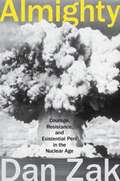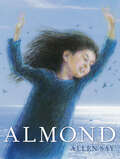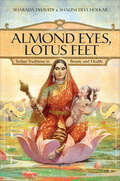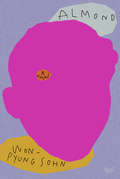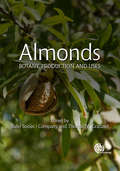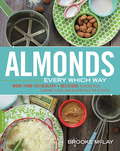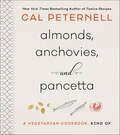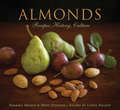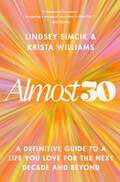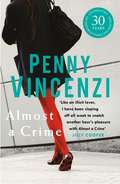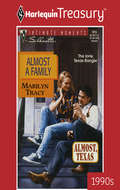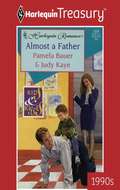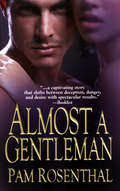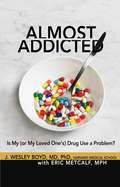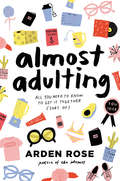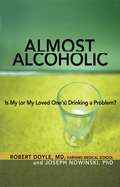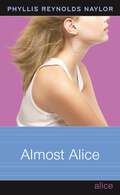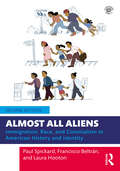- Table View
- List View
Almighty: Courage, Resistance, and Existential Peril in the Nuclear Age
by Dan ZakON A TRANQUIL SUMMER NIGHT in July 2012, a trio of peace activists infiltrated the Y-12 National Security Complex in Oak Ridge, Tennessee. Nicknamed the "Fort Knox of Uranium," Y-12 was supposedly one of the most secure sites in the world, a bastion of warhead parts and hundreds of tons of highly enriched uranium--enough to power thousands of nuclear bombs. The three activists--a house painter, a Vietnam War veteran, and an 82-year-old Catholic nun--penetrated the complex's exterior with alarming ease; their strongest tools were two pairs of bolt cutters and three hammers. Once inside, these pacifists hung protest banners, spray-painted biblical messages, and streaked the walls with human blood. Then they waited to be arrested. WITH THE BREAK-IN and their symbolic actions, the activists hoped to draw attention to a costly military-industrial complex that stockpiles deadly nukes. But they also triggered a political and legal firestorm of urgent and troubling questions. What if they had been terrorists? Why do the United States and Russia continue to possess enough nuclear weaponry to destroy the world several times over? IN ALMIGHTY, WASHINGTON POST REPORTER Dan Zak answers these questions by reexamining America's love-hate relationship to the bomb, from the race to achieve atomic power before the Nazis did to the solemn 70th anniversary of Hiroshima. At a time of concern about proliferation in such nations as Iran and North Korea, the U.S. arsenal is plagued by its own security problems. This life-or-death quandary is unraveled in Zak's eye-opening account, with a cast that includes the biophysicist who first educated the public on atomic energy, the prophet who predicted the creation of Oak Ridge, the generations of activists propelled into resistance by their faith, and the Washington bureaucrats and diplomats who are trying to keep the world safe. Part historical adventure, part courtroom drama, part moral thriller, Almighty reshapes the accepted narratives surrounding nuclear weapons and shows that our greatest modern-day threat remains a power we discovered long ago.
Almond
by Allen SayAlmond is a breathtaking and evocative story about finding your talent from Caldecott Medalist Allen Say.Everything changes for Almond Biggs when a new girl comes to school. The New Girl can play "The Flight of the Bumblebee" fast fast fast on her violin. And every day Almond sits and listens. Lost in the music, Almond wonders if she has her own unique gift. One special day, as Almond is watching the crows, circling and twirling in the wind, she realizes that she too can spread her wings and discovers the magic to being happy inside and out.Allen Say's luminous artwork and emotionally powerful story help children discover the wondrous gift of being who they are.
Almond Eyes, Lotus Feet: Indian Traditions in Beauty and Health
by Sharada Dwivedi Shalini Devi HolkarThe Indian bestseller. “A delightful pot-pourri of a book . . . far more than just a beauty book for women, it is also a repository of Indian culture.” —Charles Allen, internationally bestselling author of Plain Tales from the RajAlmond Eyes, Lotus Feet is the fictional memoir of a wise Indian princess, who recalls the ways the women of the Indian court found friendship, faith, and love through their beauty traditions. We journey with her as she recounts a lifetime of comforting rituals, tantalizing textures, colors, and fragrances, exquisite jewels and adornments, and assorted beauty and health secrets passed through generations of women by word of mouth.In Almond Eyes, Lotus Feet, Sharada Dwivedi, a native of India, and Shalini Devi Holkar, an Indian princess by marriage, draw on the oral histories of privileged Indian women to capture and revive their many wonderful and wise beauty traditions. The result is a rich cultural tapestry, filled with ancient remedies, recipes, and tonics used to soften skin, silken hair, enrich the body, and lift the spirit like no store-bought products can. Additionally, the book offers a glossary of plants, flowers, spices, and grains and simple home remedies for women in all stages of life—from puberty to pregnancy to menopause—including:Almond-Saffron for cleansing and exfoliationPapaya-Mint Tea for acne and pimplesCream & Honey for dry skin and wrinklesCress & Rosewater for post-natal strengthTulsi Kadha (Basil Tea) for coughs or morning sicknessReplete with gorgeous photos and illustrations from a bygone era, Almond Eyes, Lotus Feet is a treasure trove of time-honored health and beauty customs that will delight the senses of modern women everywhere.
Almond: A Novel
by Won-pyung SohnThe Emissary meets The Curious Incident of the Dog in the Nighttime in this poignant and triumphant story about how love, friendship, and persistence can change a life forever.This story is, in short, about a monster meeting another monster. One of the monsters is me.Yunjae was born with a brain condition called Alexithymia that makes it hard for him to feel emotions like fear or anger. He does not have friends—the two almond-shaped neurons located deep in his brain have seen to that—but his devoted mother and grandmother provide him with a safe and content life. Their little home above his mother’s used bookstore is decorated with colorful Post-it notes that remind him when to smile, when to say "thank you," and when to laugh.Then on Christmas Eve—Yunjae’s sixteenth birthday—everything changes. A shocking act of random violence shatters his world, leaving him alone and on his own. Struggling to cope with his loss, Yunjae retreats into silent isolation, until troubled teenager Gon arrives at his school, and they develop a surprising bond. As Yunjae begins to open his life to new people—including a girl at school—something slowly changes inside him. And when Gon suddenly finds his life at risk, Yunjae will have the chance to step outside of every comfort zone he has created to perhaps become the hero he never thought he would be.Readers of Wonder by R.J. Palaccio and Ginny Moon by Benjamin Ludwig will appreciate this "resonant" story that "gives Yunjae the courage to claim an entirely different story." (Booklist, starred review)
Almonds
by Rafel Socias i Company Thomas M. GradzielThis book provides a comprehensive overview of almond growing from a scientific and horticultural perspective, covering botany, production, processing and industrial uses. Almonds are an important crop; they are highly regarded for their flavour, nutritional properties and culinary uses, and almond oil is used widely in food, cosmetic and pharmaceutical production. They are easy to transport and have long storability, facilitating global dissemination. Demand is constantly increasing and global production has more than doubled in the last 20 years. The popularity of almonds and the increase in demand has required new plantings and a response to ongoing changes in cultural and climatic conditions. Almonds: Botany, Production and Uses meets the need for up-to-date information on this crop and covers: #65533; botany and taxonomy #65533; cultivation, genetics and breeding #65533; propagation, orchard management and harvesting #65533; pests and diseases #65533; nutrition, marketing and utilization Authored by an international team of experts and presented in full colour throughout, this book is an essential resource for academic researchers and extension workers, as well as growers, orchard managers and industry personnel.
Almonds Every Which Way: More than 150 Healthy & Delicious Almond Milk, Almond Flour, and Almond Butter Recipes
by Brooke MclayAlmonds are everywhere, and with good reason! Full of vitamin E, magnesium, protein, fiber, calcium, and more, this superfood delivers lots of health benefits in a delicious little package. When almonds are made into grain-free flour, non-dairy milk, and nut butter, these easy alternatives to wheat flour, dairy, and peanut butter support a variety of diets--vegan to gluten-free, vegetarian to Paleo. Whether you're following a particular way of eating or just looking to add variety to your cooking, Almonds Every Which Way offers key info for incorporating more nutritious foods into your diet, including:Basic recipes for homemade almond milks, butters, and floursEasy tips and tricks for using and storing almond ingredientsNutritional info for each recipeDesignations for gluten-free, allergy-free, dairy-free, vegetarian, vegan, and Paleo optionsAnd, of course, the recipes: you'll find more than 150 scrumptious almond-based dishes, from breakfast favorites like smoothies, pancakes, and croissants, to sandwiches, snacks, and easy, family-pleasing entrees like fish tacos and vegan "neatloaf." With Almonds Every Which Way, you'll have every diet, meal, and taste bud covered.
Almonds and Raisins (Almonds and Raisins)
by Maisie MoscoA family&’s survival depends on their unbreakable bond. First in the trilogy of new beginnings and lasting dreams from the &“undisputed queen of her genre&” (The Jewish Chronicle). The Sandberg family arrive in England having fled Russia to avoid persecution. It is 1905, and in their new home of Manchester they soon discover that hardships can come in many forms. It&’s a friendship with their neighbors, the Moritz family, that finally makes them feel at ease. As the two families become increasingly intertwined, it is eldest son David who finds the culture of his new country encourages him to rebel against his mother&’s wishes. Sarah Sandberg has ruled the family with a quiet authority but now faces the challenge of a son who wants to shake off duty in his own desire for love and freedom. In the years ahead, the Sandbergs will face even greater challenges. It is only their enduring spirit that sees them overcome the odds to find sanctity, and even joy, as they survive each twist and turn of life. A much-loved novel from an internationally bestselling author, perfect for fans of Emma Hornby and Sheelagh Kelly. Praise for the writing of Maisie Mosco &“Once in every generation or so a book comes along which lifts the curtain.&” —The Guardian &“Full of freshness and fascination.&” —Manchester Evening News
Almonds, Anchovies, and Pancetta: A Vegetarian Cookbook, Kind Of
by Cal Peternell2019 James Beard Award NomineeFrom the author of the New York Times bestselling, IACP Award-winning Twelve Recipes comes a charming vegetable-focused cookbook with sixty recipes that add depths of flavor using three key ingredients: almonds, anchovies, and pancetta.Celebrated chef and home cook Cal Peternell likes to eat today the way people have been eating forever: with vegetables at the center of the plate, seasoned with a little bit of meat or fish to make a meal savory and satisfying. A little of the right kind of meat goes a long way, and in this book, the right ones are anchovies and pancetta, along with almonds, because nuts are the meat of the plant world. Cal uses them first for flavor, but also because it makes sense: taking savory little bites is inarguably better than big meaty mouthfuls. The salt in anchovies and pancetta draws out and enhances flavors, enriching the rest of the dish, and almonds compare favorably fat-wise and can bring a major flavor boost, especially when they’re ground up. This kind of cooking is healthy, leans toward sustainability, and is economical in a way that pleases both palate and pocketbook.The simple, flexible recipes in this book include Baked, Stuffed Vegetables with Almonds, Currents, Saffron, and Breadcrumbs; Steamed Clams with Almond and Parsley Butter; Roasted Sweet Pepper and Egg Salad with Anchovies, Olives, and Capers; Penne alla Tuna-nesca; Bacon-wrapped Potato Gratin; and Creamy Salsa Rustica with Egg and Pancetta. Cal’s old-new way with vegetables gives them small gifts of tasty goodness that will inspire readers to their own mealtime creativity.
Almonds: Botany, Production and Uses (Botany, Production and Uses)
by Patrick Brown Gregory Reighard Mariano Cambra James Adaskaveg Robert Curtis Vicente Pallás José M Alonso José M Ansón Octavio Arquero Roger A Baldwin Ignasi Batlle Mireia Bordàs Miguel A. Cambra Joseph H. Connell Federico Dicenta David A. Doll Henri Duval Iban Eduardo Daniel Esmenjaud José L Carbó Maria T Espiau Antonio J. Felipe Angel Fernández i Martí Carolina Font i Forcada Helga Förster Luis Iannamico Santiago Izquierdo Sat Darshan Khalsa Ossama Kodad Maria M. López Carmen Martínez Pedro Martínez-Gómez Saiful Muhammad Eva Núñez Seoane Antonio Olmos Ana Palacio-Bielsa Katherine Pope Maria J Rubio-Cabetas Ned T. Ryan Sebastián Sáa Silva Raquel Sánchez-Pérez Francisco J. Vargas Steve Weinbaum Michelle Wirthensohn Shu-Biao Wu Frank G Zalom Alexis VerdúThis book provides a comprehensive overview of almond growing from a scientific and horticultural perspective, covering botany, production, processing and industrial uses. Almonds are an important crop; they are highly regarded for their flavour, nutritional properties and culinary uses, and almond oil is used widely in food, cosmetic and pharmaceutical production. They are easy to transport and have long storability, facilitating global dissemination. Demand is constantly increasing and global production has more than doubled in the last 20 years. The popularity of almonds and the increase in demand has required new plantings and a response to ongoing changes in cultural and climatic conditions. Almonds: Botany, Production and Uses meets the need for up-to-date information on this crop and covers: · botany and taxonomy · cultivation, genetics and breeding · propagation, orchard management and harvesting · pests and diseases · nutrition, marketing and utilization Authored by an international team of experts and presented in full colour throughout, this book is an essential resource for academic researchers and extension workers, as well as growers, orchard managers and industry personnel.
Almonds: Recipes, History, Culture
by Barbara Bryant Betsy Fentress Lynda BalslevA treasury of information and &“simple and creative&” recipes that make the most of this delicious, nutritious nut (Daniel Boulud, chef and restaurateur). From the anatomy of a nut to the history of the almond in world culture, the cultivation of almond orchards in California, and nutrition provided by a favorite nut, this book provide a wealth of information about the versatile, high-protein, diet-friendly almond—along with numerous recipes that incorporate this scrumptious ingredient in snacks, starters, salads, pasta dishes, entrees, and desserts. Try over 50 recipes including Soba Noodles with Spicy Almond Butter Sauce · Almond-Crusted Pork Chops with Sweet-and-Sour Apricot Glaze • Lamb Tagine with Apricots, Almonds and Honey • Almond Florentine Cookies • Chocolate-Amaretto Torte • Moroccan Rice Pudding • Chocolate-Almond Bark • and moreIncludes photos
Almost 30: A Definitive Guide to a Life You Love for the Next Decade and Beyond
by Lindsey Simcik Krista WilliamsTurn your mess into magic. The years leading up to thirty can feel more agonizing than exciting. The pressure to have it all figured out—your job, your relationships, your life—is intense. And as if that’s not enough, bam! Along comes Saturn Return, a cosmic milestone that thrusts you into adulthood … ready or not.Lindsey Simcik and Krista Williams—creators of the #1, critically acclaimed wellness podcast Almost 30 and its global community—help you navigate this season of astronomical (and astrological) transition in your life. Consider them the big sisters of your Saturn Return, here to guide you, hold your hand, and cheer you on as you embark upon this monumental transition that will touch every single part of your life, from your body to your relationships to your spirituality. In addition to looking back at their own alternately hilarious and perceptive stories of being almost thirty, the authors share expert insights, research, practices, and tools they’ve cultivated through nearly a decade of hosting their podcast.Dive into thought exercises, meditations, journaling prompts, and sage advice from expert podcast guests such as Jay Shetty, Gabby Bernstein, Glennon Doyle, Nicole LaPera, and many more. Almost 30 is the go-to book for every woman standing on the cusp of where they’ve been and where they’re going. Because change is imminent, and we’re all almost … something.
Almost A Crime
by Penny Vincenzi'Deliciously readable' Mail on SundayTom and Octavia Fleming have the perfect power marriage: he is a spin-doctor and she runs a consultancy to the charity industry. They are attractive, rich and successful. Then Octavia discovers Tom is having an affair, and both the discovery and the affair itself have consequences that are potentially fatal. For this is no ordinary affair, but one that leads to terror and danger, and threatens to damage people's lives for ever.
Almost A Crime
by Penny Vincenzi'Deliciously readable' Mail on SundayTom and Octavia Fleming have the perfect power marriage: he is a spin-doctor and she runs a consultancy to the charity industry. They are attractive, rich and successful. Then Octavia discovers Tom is having an affair, and both the discovery and the affair itself have consequences that are potentially fatal. For this is no ordinary affair, but one that leads to terror and danger, and threatens to damage people's lives for ever.
Almost A Family
by Marilyn TracyALMOST, TEXAS The lone Texas Ranger WANTED: THE PERFECT DAD The Smithton triplets had picked Texas Ranger Steve Kessler to marry their mom. But how could they bring a big-city lawman to a place like Almost? Write him about the "murder" in town! Widow Taylor Smithton was aghast at her boys' latest stunt. Soon, though, a real murder was uncovered and Taylor was grateful she had Steve to turn to. But could this self-declared loner become the father her sons dreamed of—and the husband she desperately needed? ALMOST, TEXAS. Where a hazard-free happily-ever-after is almost always guaranteed!
Almost A Family
by Marilyn TracyALMOST, TEXAS The lone Texas Ranger WANTED: THE PERFECT DAD The Smithton triplets had picked Texas Ranger Steve Kessler to marry their mom. But how could they bring a big-city lawman to a place like Almost? Write him about the "murder" in town! Widow Taylor Smithton was aghast at her boys' latest stunt. Soon, though, a real murder was uncovered and Taylor was grateful she had Steve to turn to. But could this self-declared loner become the father her sons dreamed of—and the husband she desperately needed? ALMOST, TEXAS. Where a hazard-free happily-ever-after is almost always guaranteed!
Almost A Father
by Judy Kaye Pamela BauerKIDS & KISSES A lawyer--in the nursery! Grant Harris was used to dealing with difficult disputes, but when he agreed to help out his sister and run her nursery for a while he was clearly out of his depth. Being a substitute father to a bunch of noisy toddlers was no problem; it was Susan Spencer--one of the mothers--who gave him all the grief. The trouble was, Grant wanted her, but Susan didn't trust him--or any man, for that matter. Nothing Grant did was right--not his ingenious plans to entertain the kids or his winning ways with her son, Jamie. So, if he couldn't convince her of his talents as a dad, how could he convince her he'd make a good husband? A story that's brimming with fun, laughter and emotion from this talented duo! Where kids and kisses go hand in hand
Almost A Gentleman (Brava Historical Romance Ser.)
by Pam RosenthalA Daring Masquerade. . .For three years, London's haute ton has been captivated by the cool elegance of Philip "Phizz" Marston. Tall, refined, an expert gambler with a cold, unerring eye for style, what keeps the ruthless social climbers attuned to this dandy's every move is something more unsettling. . .a grace and beauty that leaves women and men alike in a state of unthinkable yearning. . .. . .Will Be Deliciously Undressed. . . Lord David Hervey must be losing his mind. How else explain the disturbing desires he feels whenever his eyes meet the penetrating gaze of Mr. Marston? When he overhears a threat on the gentleman's life, he intervenes and alone discovers the glorious truth. . .beneath the bindings of Mr. Marston's masquerade hides an exquisite body that is every bit a woman's. . . . . .And Every Hidden Desire, Revealed. Armed with desire and entrusted with her bold game, Lord David won't give up till the lady gives in, revealing herself to him completely, surrendering her deepest secrets with every persuasive pleasure he can offer. . .
Almost Addicted: Is My (or My Loved One's) Drug Use a Problem?
by J. Wesley Boyd Eric MetcalfAlmost Addicted will help you assess your or your loved one's drug use and evaluate its impact on relationships, work, and personal well-being.Do you think your pot smoking is hindering your relationships? Does it feel as if you're just a tad too dependent on the pills your doctor prescribed for pain? Almost Addicted will help you assess your or your loved one's drug use and evaluate its impact on relationships, work, and personal well-being.Most people who abuse illegal drugs don't fit the image of the dysfunctional, hustling addict who can't fit into normal society. Between the estimated 10 percent of the population who are true addicts and those who don't use drugs at all falls a group of regular drug users who oftentimes don't realize how much their use is affecting their daily lives.According to J. Wesley Boyd, MD, of Harvard Medical School, and Eric Metcalf, MPH, these people are almost addicted. Whether their drug of choice is legal or illegal, an upper or a hallucinogen, an almost addicts' drug use is negatively impacting their quality of life--but falls short of meeting the diagnostic criteria for substance abuse or dependence.For the first time, Boyd and Metcalf describe what it is to be almost addicted and provide almost addicts and their loved ones with the knowledge and guidance to address and evaluate their condition. In this book, readers will find the tools toidentify and assess their patterns of drug use;evaluate its impact on relationships, work, and personal well-being;develop strategies and goals for abstaining from or cutting back on drugs;measure the results of applying these strategies; andmake informed decisions about next steps, including getting professional help if needed.
Almost Adulting: All You Need to Know to Get It Together (Sort Of)
by Arden RoseFor fans of Grace Helbig and Alexa Chung comes a fresh, hilariousguide to growing up your way from social media influencer and lifestyle vlogger Arden Rose.In Almost Adulting—perfect for budding adults, failing adults, and eaters of microwave mug brownies—Arden tells you how to survive your future adulthood. Topics include:Making internet friends who are cool and not murderersFlirting with someone in a way to make them think you are cool and not a murdererBeing in an actual relationship where you talk about your feelings in a healthy manner??? To the other person???????Eating enough proteinAssembling a somewhat acceptable adult wardrobe when you have zero dollarsGoing on adventures without starting to smellHow sex is supposed to feel, but, like, actually thoughBy the end of the book—a mash-up of essays, lists, and artwork—you'll have learned not only how to dress yourself, how to travel alone, how to talk to strangers online, and how to date strangers (in PERSON!), but also how to pass as a real, functioning, appropriately socialized adult.
Almost Adults: The relatable and life-affirming story about female friendship you need to read in summer 2019
by Ali PantonyEncapsulates the highs and lows of friendship in your twenties. Perfect for fans of Dolly AldertonThe struggle is real but at least they're all in it together.Ever managed to kill a succulent after just a few days?Got seven reminder letters on the kitchen table because you forgot to pay your council tax?Become a hot mess who’s falling apart because they’ve been broken up with?Mackie, Edele, Alex and Nat are navigating their chaotic and confusing twenties together. They have jobs and pay their own rent (well, most of them) but don't know how to bleed radiators, defrost a freezer or test the smoke alarms. With break-ups to deal with and major decisions to make, life can get messy especially when they're still trying to get the hang of this 'being a grown-up' thing. Welcome to the joys of being almost adults.A relatable and uplifting coming-of-age novel about 'adulting' and female friendships perfect for fans of Holly Bourne's How Do You Like Me Now?, Beth O'Leary's The Flatshare and Lucy Vine's Are We Nearly There Yet?
Almost Alcoholic: Is My (or My Loved One's) Drinking a Problem?
by Joseph Nowinski Robert DoyleDetermine if your drinking is a problem, develop strategies for curbing your intake, and measure your progress with this practical, engaging guide to taking care of yourself.Every day, millions of people drink a beer or two while watching a game, shake a cocktail at a party with friends, or enjoy a glass of wine with a good meal. For more than 30 percent of these drinkers, alcohol has begun to have a negative impact on their everyday lives. Yet, only a small number are true alcoholics--people who have completely lost control over their drinking and who need alcohol to function. The great majority are what Dr. Doyle and Dr. Nowinski call "Almost Alcoholics," a growing number of people whose excessive drinking contributes to a variety of problems in their lives.In Almost Alcoholic, Dr. Doyle and Dr. Nowinski give the facts and guidance needed to address this often unrecognized and devastating condition. They provide the tools toidentify and assess your patterns of alcohol use;evaluate its impact on your relationships, work, and personal well-being;develop strategies and goals for changing the amount and frequency of alcohol use;measure the results of applying these strategies; andmake informed decisions about your next steps.
Almost Alice: Dangerously Alice; Almost Alice; Intensely Alice (Alice #20)
by Phyllis Reynolds NaylorIs it possible to be too good a friend -- too understanding, too always there, too much like a doormat? Alice has always been a good friend to Pamela and Liz, a best friend to Pamela and Liz. But she's starting to wonder where that leaves her: What am I? An ear for listening? An arm around the shoulder? And then there's Patrick -- after ending their relationship two years ago, he's suddenly calling again, and wants to take her to his senior prom. What does that mean? As Alice tries to figure out who she is in relation to her friends, she learns one thing -- sometimes friends need you more than they let on...especially when the unthinkable happens. Always honest, brave, and true, the Alice series never flinches from big issues, and never discounts the small ones.
Almost All About Unit Roots
by In ChoiMany economic theories depend on the presence or absence of a unit root for their validity, and econometric and statistical theory undergo considerable changes when unit roots are present. Thus, knowledge on unit roots has become so important, necessitating an extensive, compact, and nontechnical book on this subject. This book is rested on this motivation and introduces the literature on unit roots in a comprehensive manner to both empirical and theoretical researchers in economics and other areas. By providing a clear, complete, and critical discussion of unit root literature, In Choi covers a wide range of topics, including uniform confidence interval construction, unit root tests allowing structural breaks, mildly explosive processes, exuberance testing, fractionally integrated processes, seasonal unit roots and panel unit root testing. Extensive, up to date, and readily accessible, this book is a comprehensive reference source on unit roots for both students and applied workers.
Almost All Aliens: Immigration, Race, and Colonialism in American History and Identity
by Paul Spickard Francisco Beltrán Laura HootonAlmost All Aliens offers a unique reinterpretation of immigration in the history of the United States. Setting aside the European migrant-centered melting-pot model of immigrant assimilation, Paul Spickard, Francisco Beltrán, and Laura Hooton put forward a fresh and provocative reconceptualization that embraces the multicultural, racialized, and colonially inflected reality of immigration that has always existed in the United States. Their astute study illustrates the complex relationship between ethnic identity and race, slavery, and colonial expansion. Examining the lives of those who crossed the Atlantic, as well as those who crossed the Pacific, the Caribbean, and the North American Borderlands, Almost All Aliens provides a distinct, inclusive, and critical analysis of immigration, race, and identity in the United States from 1600 until the present. The second edition updates Almost All Aliens through the first two decades of the twenty-first century, recounting and analyzing the massive changes in immigration policy, the reception of immigrants, and immigrant experiences that whipsawed back and forth throughout the era. It includes a new final chapter that brings the story up to the present day. This book will appeal to students and researchers alike studying the history of immigration, race, and colonialism in the United States, as well as those interested in American identity, especially in the context of the early twenty-first century.
Almost All Aliens: Immigration, Race, and Colonialism in American History and Identity
by Paul SpickardAlmost All Aliens offers a unique reinterpretation of immigration in the history of the United States. Leaving behind the traditional melting-pot model of immigrant assimilation, Paul Spickard puts forward a fresh and provocative reconceptualization that embraces the multicultural reality of immigration that has always existed in the United States. His astute study illustrates the complex relationship between ethnic identity and race, slavery, and colonial expansion. Examining not only the lives of those who crossed the Atlantic, but also those who crossed the Pacific, the Caribbean, and the North American Borderlands, Almost All Aliens provides a distinct, inclusive analysis of immigration and identity in the United States from 1600 until the present. For additional information and classroom resources please visit the Almost All Aliens companion website at www.routledge.com/textbooks/almostallaliens.
